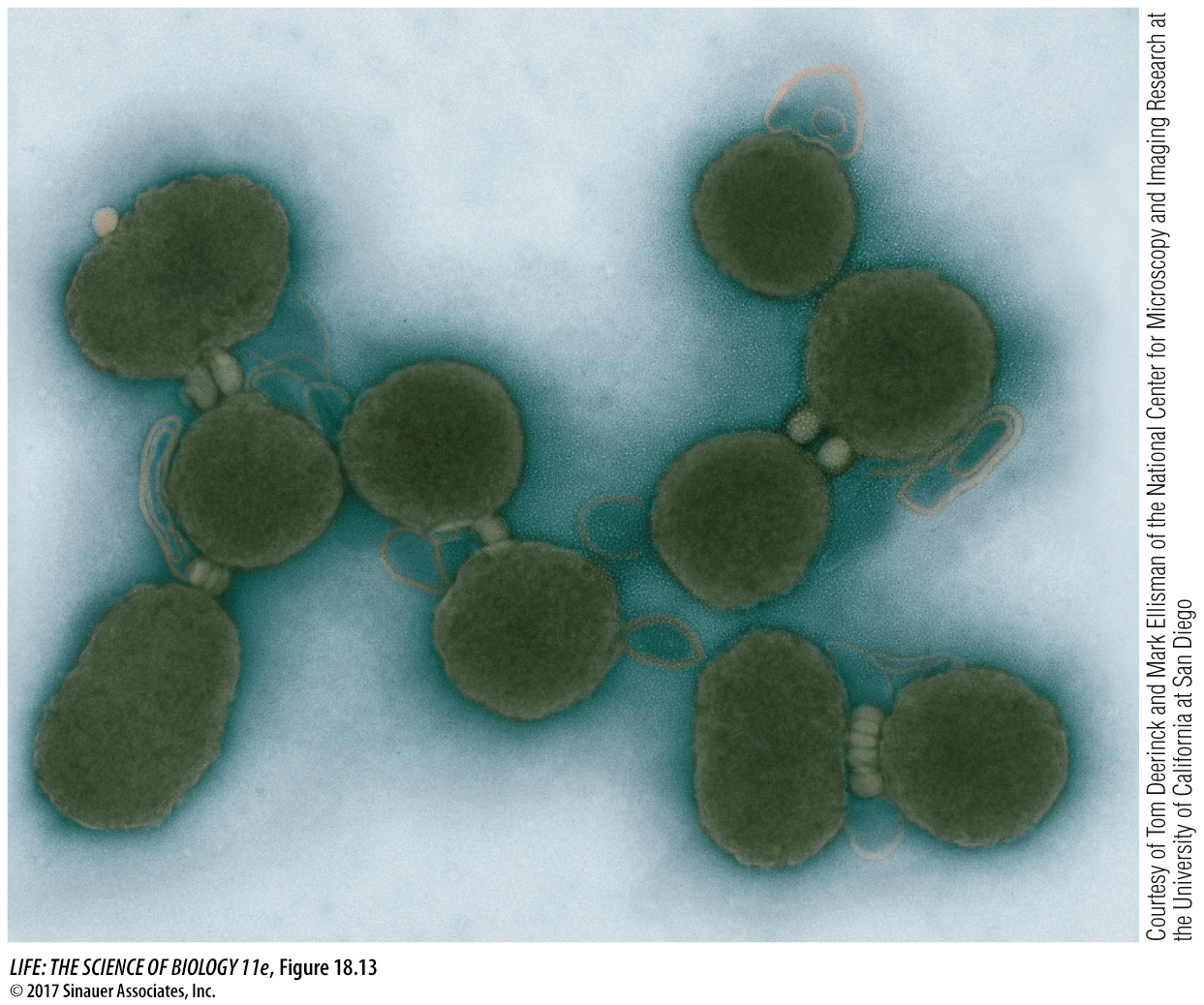Synthetic biology can create living factories for new products
In Key Concept 17.2, you learned how inactivating genes one at a time can help define which genes are necessary for life in a particular organism (the minimal genome) and which ones confer special properties to the organism. One goal of this research is to design new life forms with specific purposes. That is, new genes could be added to the minimal genome. An important step toward this goal has been the laboratory synthesis of an artificial genome and its insertion into bacterial cells. This was first done using the bacterium Mycoplasma mycoides. The artificial genome was then inserted into empty cells of a related species, Mycoplasma capricolum, whose own DNA had been hydrolyzed. The new DNA directed the cell to perform the biochemical functions of life, including reproduction (Figure 18.13).

Q: What are some potential uses of synthetic cells?
Synthetic cells could be programmed to make natural molecules with new properties such as antibiotics with altered structures and targets, or plastics that are biodegradable, or fuels.
The aims of synthetic biology are bold: to create bacteria or other organisms with new functions, such as producing hydrocarbons for fuel, new drugs for medicine, bacteria that make plastics and other polymers, and so on. But before these functions can be added to the genome, the genes involved must be clearly described, including regulatory genes and sequences such as promoters that function in host cells. Thousands of such genes and chemicals that regulate their expression have now been associated with many known gene functions. For example, a single function (bacteria making ammonium sulfate that could be used for fertilizer in farming) requires more than 70 genes.